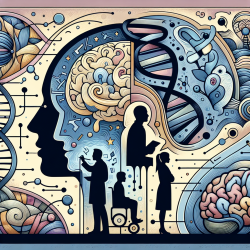The landscape of gender identity and expression is rapidly evolving, presenting both challenges and opportunities for practitioners working with gender nonconforming youth. The research article "Gender Nonconforming Youth: Current Perspectives" by Diane Ehrensaft provides valuable insights into the complexities of gender development and care models. This blog post aims to help practitioners enhance their skills by implementing research outcomes and encouraging further exploration in this critical field.
Understanding Gender Development
The traditional model of gender development has been challenged by contemporary understandings that recognize the fluidity and diversity of gender identities. Practitioners are encouraged to unlearn outdated concepts and embrace a more nuanced model that considers the interplay of nature, nurture, culture, and time. This approach acknowledges that gender identity may not align with the sex assigned at birth and that it can evolve over time.
Models of Care for Gender Nonconforming Youth
The article reviews three predominant models of care:
- The "Live in Your Own Skin" Model: This model emphasizes helping children accept the gender that matches their sex assigned at birth. It assumes young children's gender identities are malleable and aims to prevent a transgender outcome.
- The Watchful Waiting Model: This approach involves observing a child's gender expressions over time without intervention. It supports social transitions during adolescence if the child consistently identifies with a different gender.
- The Gender Affirmative Model: This model supports children in expressing their authentic gender identities at any age. It encourages social transitions when appropriate and emphasizes collaboration between children, parents, and professionals.
Implementing Research Insights
Practitioners can enhance their skills by integrating interdisciplinary approaches to gender care. Collaboration between mental health and medical professionals is crucial in providing holistic support for gender nonconforming youth. Understanding the psychological and physical aspects of gender development allows practitioners to offer comprehensive care tailored to each individual's needs.
Encouraging Further Research
The field of gender nonconforming youth care is dynamic, with ongoing research needed to refine models and practices. Practitioners are encouraged to stay informed through conferences, publications, and webinars. Engaging in continuous learning will enable them to provide informed and empathetic support to their clients.
To read the original research paper, please follow this link: Gender nonconforming youth: current perspectives.










